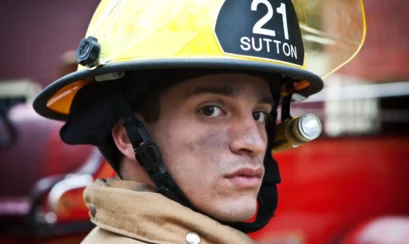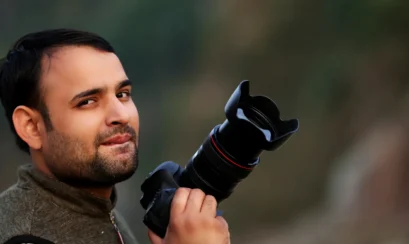There is currently a stand-off of sorts between the NSW Police and the NSW Greens party and various activists and groups, regarding the need for and effectiveness of police drug detector dogs.
Sniffer dog indications often lead to false positives as no drugs are found
The stand-off is likely to be resolved in the courts, as the opponents of sniffer dog use – especially at events like dance parties and music festivals – have stated they intend to pursue legal challenges to the use of the dogs.
Those opponents claim that the dogs give many “indications” (ie that they have sniffed drug odour in the airspace around a person) but that many of these “indications” do not result in any drugs being found during a physical search of the person.
Court injunction fails to stop NSW Police denying festival entry based on drug dog indications
One attempt to injunct the police in the NSW Supreme Court involved a music event, “Above & Beyond: Common Ground” at Sydney Showgrounds over the queen’s birthday weekend in June 2018. The injunction application was dismissed on Friday 8 June as being “hypothetical”. (See NSW Police drug dog strategy at Sydney Above & Beyond show to go ahead as injunction bid fails.)
A further legal challenge is planned shortly.
More charges for drug possession and supply at music festivals
However, observers note that the quantity of drugs actually seized at the relevant functions has increased and continues to do so. Specifically, the number of charges for possession and supply at festival-type events increased in the first half of 2018. Many more young females are being detected. (For more information, please see our 2021 article What are police powers to arrest and strip search in NSW?)
So, we have an increase in detector dog “indications”, fewer searches with resultant drug seizures, but actual drug quantities inside festivals going up. So, what is really going on?
Criticism of police based on “failed indications” by a drug sniffer dog ignores the realities. Police believe that the type of searches they are permitted to carry out after an “indication” are quite limited, usually being frisk and clothing searches.
Police likely to be given greater powers to locate concealed drugs
There is no objective reason to believe that a dog “indication” is limited to drugs concealed “on or about” the person. Other agencies have legislation, powers and technical (including medical) support to locate drugs “on, in, or about the person”.
The legal questions being ventilated now will almost certainly lead to NSW police being given identical powers. The reality is that intercepting drugs – especially locally manufactured drugs – is no longer a national border problem or responsibility.
Criminals have great incentive to use all smuggling methods available
Meanwhile, back at the music festival… Is it “reasonable cause to suspect” an internal concealment after a detector dog indication when no drugs are located by a search of the person and clothing? Customs officers would say “yes”. But they have the legislative and operational powers and support to perform an internal search.
The question to ask is why wouldn’t a criminal syndicate use traditional smuggling techniques to get a very profitable shipment inside a festival, when there is so little chance of being caught even if a drug detector dog reacts to the carrier?
Increasing use of females as internal carriers of drugs
A recent police interception followed additional intelligence regarding females being used as internal carriers. That intelligence was rewarded (along with other seizures) by one detected by traditional policing methods: a male was overheard coercing a female to do such a carry outside a party, which resulted in a domestic matter as she resisted.
If this conversation had not been overheard, it may have resulted in a successful internal carry beyond the police cordon. Smugglers will try all methods in the hope of succeeding in this environment. (For an explanation of body cavity searching of drug mules – “stuffers” and “swallowers” – please see FYI: How Much Cocaine Can You Fit In Your, Ahem, Body?)
Persons in custody likely to face medical examinations in future
The NSW legislation regarding full body cavity searching is still legally and personally complex. But it is the only effective method to detect actual internal concealment of considerable quantities of drugs.
There will probably be a series of increasingly serious steps for persons in custody, to the eventual medical examinations (x-ray, ultrasound or invasive) to determine if anything is being concealed internally.
Criminal lawyers and their clients may need to adjust to a changing legal landscape quickly
While the NSW government looks into the cavity situation, criminal lawyers will need to develop a response to new legislation and powers of police for those situations where the ultimate search locates nothing, or something.
Internal cavity smuggling is not new anywhere. In NSW body cavity searches are authorised in some areas, for example, prisons. In Australia some spectacular detections have been made.
In September 2016, the Australian Federal Police reported charging a man travelling from Thailand to Australia who attempted to smuggle 1100 grams of cocaine internally. The drugs had an estimated street value around $500,000 at the time, based on quantity and purity. (See Man arrested for internal importation of cocaine.)
The NSW government did pass legislation to deal with internal drug concealments, the Police Powers (Internally Concealed Drugs) Act 2001. (It was repealed on commencement of Schedule 3 to the Law Enforcement (Powers and Responsibilities) Act 2002 on 1 December 2005).
In the event that legislation permitting searches for internally concealed drugs is passed in NSW, criminal lawyers and their clients will have to adjust to a changing legal landscape very quickly.














